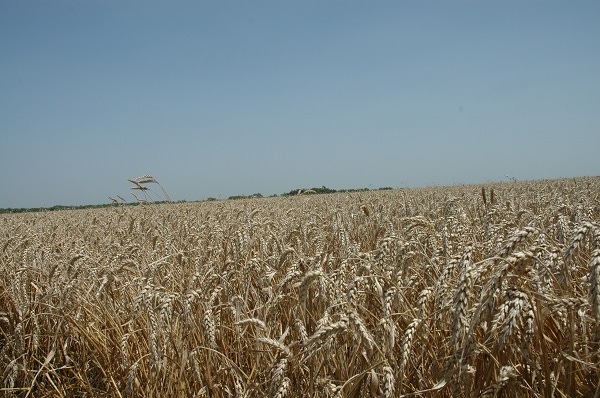January 5, 2015

Who would have predicted that gasoline prices would be below $2 per gallon (down from $3.50 in June 2014), that oil prices would be below $50 per barrel (down from $110 in August 2014), and that Perryton, Texas, corn prices would bottom out below $3.40 (down from a peak of $8.90 in August 2012)? Wheat producers should learn from these price declines.
Wheat prices have declined. In July 2014, wheat prices were near $8.50. By June 2014, cash wheat prices were near $7.50. By the end of September 2014, wheat prices had fallen to $5.30, which is not nearly as low as wheat prices could go.
What current oil, gasoline, and corn prices show is that if U.S. wheat ending stocks go above 850 million bushels and world wheat ending stocks go above 7.5 billion bushels, Oklahoma and Texas cash wheat prices could go below $4. In June 2010, Oklahoma and Texas cash wheat prices were near $3.50.
The good news is that relatively tight hard red winter wheat stocks and cold temperatures, with little to no snow cover, are supporting wheat prices. Oklahoma and Texas wheat prices have increased from the $5.30 September low to near $6. At this writing, wheat may be contracted for 2015 harvest delivery for about $6.05 in central Oklahoma and about $5.90 in the Texas Panhandle.
For the latest on southwest agriculture, please check out Southwest Farm Press Daily and receive the latest news right to your inbox.
At this writing, U.S. hard red winter (HRW) wheat 2014/15 marketing year ending stocks are projected to be 227 million bushels compared to a five-year average of 333 million bushels. The HRW wheat stocks-to-use ratio is 30 percent compared to a five-year average of 37 percent. Relatively low HRW wheat stocks, the number of planted acres and current wheat conditions lower the odds of 2015/16 HRW wheat ending stocks going above 333 billion bushels and wheat prices going below $4.50.
A negative price factor is the value of the U.S. dollar compared to other major currencies. Since early July 2014, the index measuring the value of the U.S. dollar to other major currencies has increased from 80 to near 92.
A 15 percent (80 points to 92 points) increase in the value of the dollar effectively increases the cost of exported wheat by 15 percent. Assume that the HRW, 12 percent protein wheat price at the Texas Gulf (FOB) is $7.50. If the index of the dollar was 80 rather than the current 92, the effective price would be $6.52. The increased value of the dollar has effectively made the cost of U.S. wheat about $1 higher to foreign buyers.
Producers could believe that $7.50, as compared to $6.50, implies a higher farm level price. The fact is that this $1 has no direct impact on producer prices. A direct impact is that the higher value of the dollar increases the cost of U.S. wheat, export demand is less and producer prices are lower.
Producers ask what the petroleum industry’s reaction will be to extremely low prices. High-cost oil wells will be shut down; fewer oil wells will be drilled; and the least efficient distilleries will be closed, resulting in decreased supplies and higher prices.
Evidence exists that for the most part, the petroleum industry has prepared for lower prices. Extremely low prices happen. Smart managers prepare for extremely low prices by building cash reserves. Then when prices go back up, they will be in business to take advantage of profitable prices.
Wheat producers need to do the same thing. That is, know that $4 wheat is a possibility and that staying in business requires being prepared with cash reserves and having a plan for extremely low prices.
About the Author(s)
You May Also Like






